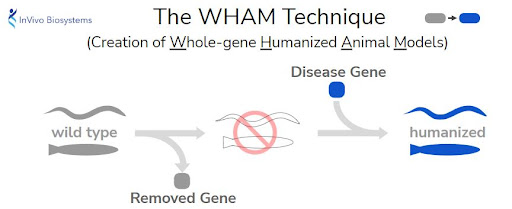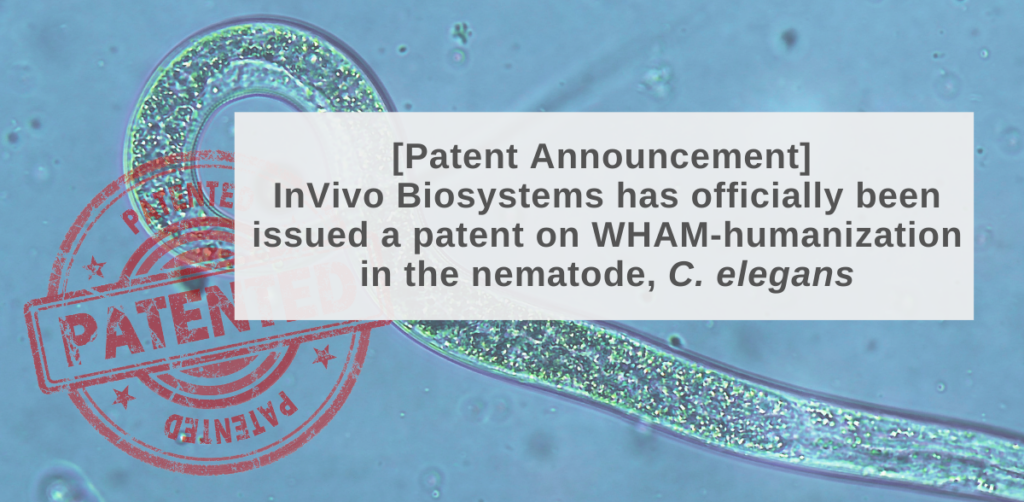Summary:
We are excited to announce that the USPTO has issued a patent titled, ‘Transgenic animal phenotyping platform and uses thereof’ to InVivo Biosystems. This groundbreaking patent covers the genetic modification of a C. elegans nematode, so that the gene sequence partially, or fully, matches that of a human – this enables the C. elegans to act as an Avatar for MoA (mechanism of action) and drug discovery studies. InVivo Biosystems adds this patent to our IP portfolio which includes 3 previously granted patents and 12 patent applications. In this article we will discuss this patent and the CRISPR WHAM-humanization method.
To see the patent click HERE:
To convert the nematode, C. elegans into a platform with higher translatability to humans, InVivo Biosystems utilized whole gene humanization (WHAM) – as a result, C.elegans become Clinical Avatars for use in understanding disease biology and performing phenotype screen to uncover therapeutic candidates. Recently, InVivo Biosystems was granted a patent for this proprietary technique.

Figure 1. WHAM – The animal’s version of a disease gene is replaced with the human gene coding sequence. Important genes causing disease are often conserved and essential in animal models (lethal when removed).
What is WHAM?
CRISPR-based gene editing is used to remove the animal’s version of the gene (ortholog) and replace it with the human gene equivalent. The procedure involves obtaining the most relevant human sequence (isoform) and recoding it to optimize for the animal’s unique codon bias. Next, artificial introns are inserted to promote mRNA stability in the animal. Finally, the sequence is bioinformatics processed to remove cryptic splicing sites and the resulting sequence is inserted as gene replacement, from start codon to stop codon, at the native ortholog locus [Figure 1].
What’s next?
InVivo Biosystems will continue to utilize our expertise in genome editing to produce alternative animal models in collaboration with companies like Perlara, and academics such as Dr David Pruyne and Dr Jeff Almack. Further, we will continue to expand our portfolio to encompass our other areas of work, such as zebrafish. Stay tuned!
Click here to talk with one of our experts
Don’t wait to unlock the potential of drug discovery. Reach out to us today and tap into our drug discovery services to revolutionize the future of medicine.



